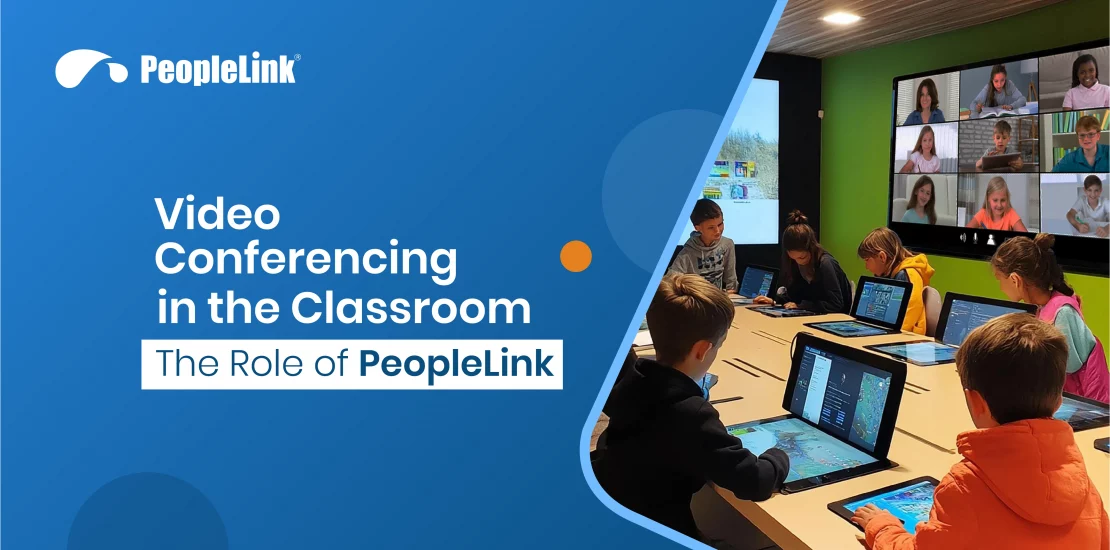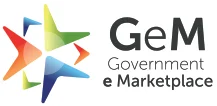Video Conferencing in the Classroom: The Role of PeopleLink
- January 22, 2025
- Posted by: PeopleLink
- Category: Blogs

In the education scenario, physical barriers often separate students and educators. Here, video conferencing began to bridge the gap. Imagine vibrant classrooms filled with eager students connecting with peers worldwide, transforming education.
At the forefront of this revolution is PeopleLink, a pioneer in advanced video conferencing solutions. They recognized the potential of digital connections to enhance academic experiences. Students in rural areas could suddenly join virtual classrooms with peers from bustling cities, sharing insights and sparking discussions that transcended their immediate surroundings.
Educators were inspired as well, adapting their teaching methods to meet diverse needs. This new era of education emphasized personalization, enriched by global perspectives. As we explore the dimensions of video conferencing in classrooms, we see how PeopleLink is leading the charge in changing educational practices globally. It’s not just about technology; it’s about fostering connection, collaboration, and a shared quest for knowledge, redefining what it means to learn in today’s world.
Global Connectivity in Education
Video conferencing has transformed education by establishing a global platform for knowledge exchange. Students from various locations can engage and collaborate in real-time, overcoming geographical limitations. Virtual field trips and expert lectures enrich the curriculum, while accessible international cultural exchanges offer students a broader global perspective.
PeopleLink’s high-definition video conferencing tools have enabled educational institutions to integrate global connectivity into their classrooms seamlessly. Whether engaging in a virtual discussion with a professor from another country or participating in a live cultural exchange program, PeopleLink enhances the accessibility of global education through its video conferencing solutions.
Enhanced Collaboration Among Students and Educators
A key advantage of video conferencing in education is its ability to enhance collaboration across different institutions, cities, and countries. This technology allows students to engage in group projects and discussions remotely, while educators can connect more effectively through visual cues and real-time interaction.
PeopleLink’s solutions, featuring screen sharing, interactive whiteboards, and video break-out rooms, streamline collaboration. These tools enable students to present their work and brainstorm ideas, fostering teamwork and innovation without the need for physical presence.
Flexible Learning Environments
Traditional education typically necessitates that students and educators be physically present in a designated location at a specified time. However, video conferencing alters this paradigm by providing enhanced flexibility in the learning process. Through online courses, remote learning programs, and hybrid learning models, students can engage with their lessons from home or from any location with internet connectivity.
PeopleLink offers hardware solutions specifically designed for smart classrooms, providing educational institutions with the necessary equipment to create an effective and flexible learning environment. Their intuitive devices and customizable features support a seamless transition for both students and educators into modern, tech-enabled classrooms. With a focus on enhancing the overall learning experience, PeopleLink’s classroom hardware solution enables easy integration of advanced educational tools and technology into the classroom.
Teacher Professional Development
Educators are essential to the effectiveness of educational systems, and ongoing professional development is critical for their advancement in contemporary teaching methods and technologies. Video conferencing in the classroom allows teachers to access remote workshops and training sessions, enhancing their skills without travel. Additionally, it facilitates collaboration with peers from different institutions, promoting the exchange of best practices and innovative instructional strategies.
PeopleLink’s robust and secure platform guarantees that professional development sessions are executed with the same level of quality as traditional in-person events. Through its interactive tools, educators can engage in meaningful discussions, participate in hands-on workshops, and obtain certifications—all facilitated via videoconferencing.
Accessibility and Inclusivity in Education
Video Conferencing in the Classroom technology has markedly enhanced access to education for students with disabilities, individuals located in remote or underserved areas, and those requiring specialized instruction. By dismantling physical barriers, video conferencing fosters a more inclusive educational environment, ensuring that all students have the opportunity to engage and participate on an equal footing.
PeopleLink’s solutions are thoughtfully designed with accessibility as a priority. Key features, including real-time captioning, language translation, and customizable screen settings, ensure that all students can engage with the lesson content, regardless of their abilities or locations. This approach has notably improved inclusive education, empowering previously marginalized students to participate and succeed in a digital classroom environment.
Security and Compliance in Educational Video Conferencing
In an era of increased digital data vulnerability, safeguarding student information is paramount. Educational institutions must comply with the Family Educational Rights and Privacy Act (FERPA) and the General Data Protection Regulation (GDPR) to protect student privacy. Therefore, video conferencing solutions must be secure and compliant with these regulations to prevent potential data breaches.
PeopleLink places a high priority on security across all its products, incorporating end-to-end encryption and stringent access controls. Its adherence to global data protection standards ensures that educational institutions, including schools and universities, can utilize the platform with confidence, free from concerns regarding data breaches or non-compliance. This commitment provides reassurance for both educators and students alike.
Future trends and Innovations in Educational Video Conferencing
Emerging technologies are transforming the future of education and enhancing video conferencing capabilities. The integration of augmented reality (AR) and virtual reality (VR) will create immersive learning experiences, enabling real-time interaction with three-dimensional models. Additionally, artificial intelligence (AI) will revolutionize education by providing personalized learning pathways based on individual student performance and engagement.
PeopleLink leads in educational innovations, continually advancing its solutions to meet the evolving needs of the sector. Its focus on artificial intelligence tools and virtual reality integration enables students and educators to experience advanced learning opportunities once deemed futuristic.
How PeopleLink Has Transformed Video Conferencing in the Classroom Worldwide?
PeopleLink has established itself as a prominent provider of video conferencing solutions in educational settings across the globe. By delivering high-definition video quality, noise-canceling microphones, interactive displays, and intuitive user interfaces, PeopleLink has effectively ensured that virtual classrooms maintain the same level of engagement and productivity as traditional learning environments. Its dedication to accessibility and security has positioned PeopleLink as a reliable partner for educational institutions, facilitating real-time connections with students, irrespective of geographical barriers.
Spanning regions from Asia to Europe and the Americas, PeopleLink has empowered educators to deliver high-quality education in a variety of learning contexts. Whether through the facilitation of interactive lessons in remote areas of India or the promotion of collaboration among universities on different continents, PeopleLink’s video conferencing solutions have proven to be transformative in the realm of modern education.
Conclusion
Educational institutions are positioning themselves for the future by adopting video conferencing solutions in the classroom. With PeopleLink’s advanced technology, the transition to virtual learning is executed in a seamless, flexible, and secure manner, thereby providing students with a dynamic and enriched educational experience. Whether facilitating global connectivity, enhancing collaboration, or fostering inclusive learning environments, PeopleLink plays a crucial role in this transformative educational landscape.




